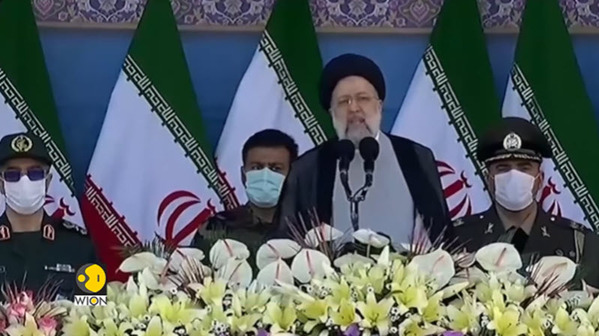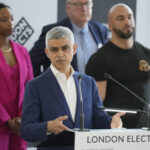
–>
June 29, 2022
The Biden administration has been working for more than a year to restore the 2015 Iran nuclear deal, and in that time it has only met with escalating Iranian intransigence and ultimatums. Since negotiations in Vienna were paused indefinitely in March, the Islamic Republic has maintained that it will sign an agreement only after the White House agrees to remove the country’s hardline paramilitary, the Islamic Revolutionary Guard Corps, from the list of foreign terrorist organizations. The administration, to its credit, has shown no willingness to make such an irrelevant concession, and the negotiations remain at an impasse.
‘); googletag.cmd.push(function () { googletag.display(‘div-gpt-ad-1609268089992-0’); }); }
Nevertheless, the very fact that those negotiations are technically still ongoing is cause for alarm among many Iran-watchers. In comments published by The Hill, Idaho Senator James Risch noted that White House officials had “promised us [the negotiation] was going to end in February if there wasn’t a deal.” In fact, even that supposed deadline represented an extension, as the administration had previously predicted the negotiations would end with either success or failure in January, or even in December 2021.
In light of indefinite extensions, the administration’s critics are understandably skeptical of Biden’s willingness to adopt an alternative strategy for dealing with Iran’s malign activities and provocations. Those critics include lawmakers from both the Republican and Democrat parties, some of whom signed joint statements urging the administration to take a harder line and to conclusively rebuff the notion of delisting the IRGC. In this sense, Iran’s policy is an outlet for extremely rare bipartisanship; but this should come as no surprise since mutual concerns over threats from Iran have also pushed Israel and its erstwhile adversaries in the Arab world to put aside their differences and begin cooperating strategically.
Those regional US allies have also been a notable source of criticism regarding the Biden administration’s needlessly soft approach to Iran policy.
‘); googletag.cmd.push(function () { googletag.display(‘div-gpt-ad-1609270365559-0’); }); }
That regional interventionism has seemingly accelerated right alongside the Iranian nuclear program, which is now operating under even less international monitoring since the clerical regime began dismantling surveillance cameras to protest the decision by the International Atomic Energy Agency’s Board of Governors to formally censure Iran for non-cooperation earlier in the month. That move comes at a time when the Islamic Republic is also planning to run an entirely new cascade of advanced uranium enrichment centrifuges at the fortified nuclear site in Fordo.
Such developments would be dangerous to the surrounding region and the world even if they occurred while Iran was otherwise complying with the restrictions imposed by the Joint Comprehensive Plan of Action (JCPOA). But Iran has been violating those restrictions for long enough that it has now enriched more than 43 kg of uranium to 60 percent fissile purity, putting it just a short technical step away from weapons grade.

Image: Iran’s President Raisi. YouTube screen grab.
Far from showing any earnest desire to resolve international concerns, Tehran has been consistently boastful about its nuclear advancements, with figures like the ultra-hardline President Ebrahim Raisi declaring publicly that they will not scale back their activities one iota in response to the IAEA censure. At the same time, regime officials and Iranian state media have sought to back up that defiant tone by making similar declarations about their military development. Last week, the IRGC’s naval forces made a threatening approach to US Navy ships as they transited the Strait of Hormuz.
One would think that such direct threats to the US would prompt the White House to respond favorably to regional appeals for a change in policy. But the White House’s skepticism remains intact, as does that of US lawmakers who recognize the threats Iran poses. But greater clarity may emerge next month when President Biden makes a tour of the Middle East, where he is expected to reassure allies about American support for their interests. Yet it remains to be seen whether that “reassurance” consists of outlining actions the administration will take in response to criticisms or arguing that those criticisms are misguided.
It is important to note that if the administration takes the latter approach, it will be placing itself very much at odds with the Iranian people and the Iranian Resistance movement, who have long contradicted Western optimism about Iran’s prospects for internal reform. The National Council of Resistance of Iran, in particular, has issued numerous statements explaining that Tehran’s regional aggression and pursuit of nuclear weapons will only continue accelerating as it becomes increasingly reliant on those “pillars” to reinforce its hold on power during times of virtually unprecedented domestic unrest.
Meanwhile, the unrest itself demonstrates that Iranians from all walks of life regard the clerical regime as incapable of reform. Since the end of 2017, the country has seen at least nine anti-government uprisings, each of which has featured slogans like “death to the dictator,” leaving little doubt about the public’s desire for regime change.
‘); googletag.cmd.push(function () { googletag.display(‘div-gpt-ad-1609268078422-0’); }); } if (publir_show_ads) { document.write(“
That desire is clearly shared by Iran’s regional adversaries. In 2016, Saudi Prince Turki al-Faisal expressed that desire directly when he spoke in France before the annual gathering of Iranian expatriates organized by the NCRI.
In the wake of these developments, it is long past time for the US and its European allies to join regional allies, and most importantly the Iranian people themselves, in openly endorsing the prospect of regime change.
On Thursday, the endorsement was offered anew by former Vice President Mike Pence, who traveled to Albania to visit the PMOI’s headquarters-in-exile, Ashraf 3. One might view that trip as a counterpoint to Biden’s looming Middle East tour.
The Biden administration is right to shore up those existing alliances, but it is even more important for the US to build new alliances by formally recognizing the legitimacy of the Iranian people’s struggle for regime change.
<!– if(page_width_onload <= 479) { document.write("
“); googletag.cmd.push(function() { googletag.display(‘div-gpt-ad-1345489840937-4’); }); } –> If you experience technical problems, please write to [email protected]
FOLLOW US ON
<!–
–>
<!– _qoptions={ qacct:”p-9bKF-NgTuSFM6″ }; ![]() –> <!—-> <!– var addthis_share = { email_template: “new_template” } –>
–> <!—-> <!– var addthis_share = { email_template: “new_template” } –>






